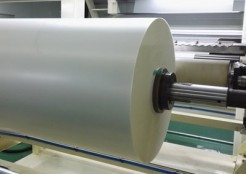Informations
Polycarbonate panels are a popular choice
for building materials due to their durability, light weight, and ease of
installation. However, during the transportation, handling, and installation
processes, these panels are at risk of being scratched, scuffed, or damaged. To
prevent this, a temporary protective film is essential for ensuring that the
panels remain in pristine condition. In this essay, we will discuss the reasons
why polycarbonate panels need a temporary protective film and how it can
benefit construction projects.
One of the primary reasons for using a
temporary protective film for polycarbonate panels is to prevent scratches and
scuffs. During transportation and handling, panels are exposed to various
hazards that can cause damage to the surface. For example, dust, debris, and
other contaminants can scratch the surface of the panel. A temporary protective
film provides a barrier between the panel and these contaminants, preventing
scratches and scuffs from occurring.
Another reason why polycarbonate panels
require a protective film is to protect against UV damage. Polycarbonate panels
are prone to discoloration and damage due to exposure to UV rays from the sun.
A temporary protective film with UV inhibitors can prevent this damage and help
to maintain the original color and clarity of the panel.
In addition to protecting against physical
damage and UV exposure, a temporary protective film can also prevent adhesive
transfer. Adhesives used in the installation of polycarbonate panels can leave
residue on the surface of the panel, which can be difficult to remove and can
impact the aesthetic appeal of the panel. A protective film provides a barrier
between the adhesive and the panel, preventing any residue from transferring to
the surface.
Using a temporary protective film for
polycarbonate panels can benefit construction projects in several ways. First,
it can help to reduce the costs associated with damaged panels. Scratched or
damaged panels may need to be replaced, which can be costly and time-consuming.
By using a protective film, construction teams can ensure that the panels
arrive at the job site in pristine condition, reducing the need for
replacements.
Another benefit of using a temporary
protective film is that it can help to improve the overall quality of the
finished project. Panels that are free from scratches and scuffs are more
aesthetically pleasing, and maintain their clarity and color for longer. This
can help to increase the value of the project and improve the satisfaction of
the client.
In conclusion, the use of a temporary
protective film for polycarbonate panels is essential for ensuring that they
remain in pristine condition during transportation, handling, and installation.
Protective films prevent scratches and scuffs, protect against UV damage, and
prevent adhesive transfer. Using a protective film can benefit construction
projects by reducing costs, improving the quality of the finished project, and
increasing client satisfaction.





